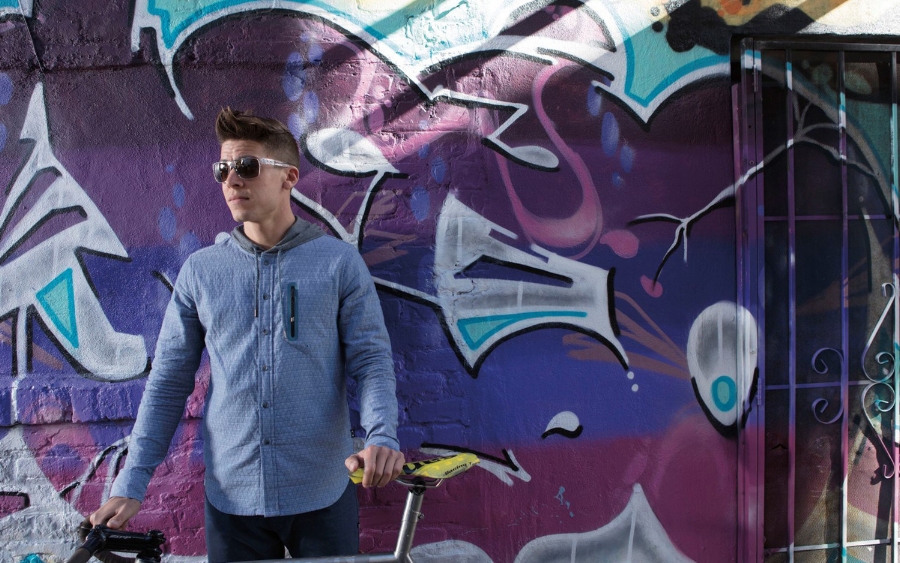
image: Oakley
In something of a déjà vu case on the heels of H&M being accused of featuring a graffiti artist’s work in one of its ad campaigns, Oakley is currently embroiled in a legal mess of its own for including graffiti in a marketing campaign without the authorization of the graffiti artists. According to a lawsuit filed late last week in U.S. District Court for the Central District of California, Donald Robbins and Noah Darr – who might be better known as “Keptione” and “DJ Rakus” – claim that Oakley “unlawfully [took] their original artwork” and splashed it all over its ad campaigns, inside its retail outposts, and in product catalogs.
The two acclaimed street artists allege that in 2015, they painted outdoor murals in San Francisco that consisted largely of their “highly stylized signatures” as part of a global art project called, Meeting of Styles. Fast forward two years to April 2017 and “in an effort to increase sales revenues, attract young new customers, and target a young urban demographic, Oakley developed and launched the international multi-media campaign featuring the murals as the centerpiece element,” Robbins and Darr assert.
In addition to alleging that Oakley reproduced the murals without their “authorization or knowledge,” the artists’ complaint states that in case “this literal misappropriation was not bad enough, Oakley also superimposed its own Oakley brand logo next to the murals throughout the campaign, as if the Oakley brand created the murals itself, or, alternatively, as if the Oakley brand was endorsed by [Robbins and Darr].”
Robbins and Darr claim that when they contacted Oakley about the alleged unauthorized use of their murals, “shockingly, counsel for Luxottica [the eyewear behemoth that owns Oakley] … responded to [their] concerns by acknowledging that Oakley had used their work, but then offensively suggested that their artwork does not have any ‘modicum of creativity’ and is just ‘generic’ markings not ‘eligible’ for any protection.”
Note: In order for an artwork to enjoy copyright protection, it must be: 1) Fixed in a tangible medium of expression, which was satisfied when the artists tagged walls with their murals; and 2) Original, meaning that the works at issue were created independently and have “at least a modicum” of creativity, this latter standard has a notoriously low threshold. As the Supreme Court worded it in 1991 (in Feist v. Rural), “The requisite level of creativity is extremely low; even a slight amount will suffice.”
Given the low bar required for “originally,” it seems unlikely that Robbins and Darr’s works would not be eligible for protection as Luxxotica claims.
The graffiti artists call Luxxotica’s response – which closely mirrors claims made by H&M when it was called out for utilizing graffiti recently – “degrading [to] an entire global community of graffiti artists.”
The complaint goes on to note that Oakley’s “exploitation of the artists’ work is outrageous and damaging [as] the artists have carefully avoided any association with corporate culture and mass-market consumerism.” Even more so, “despite offers, neither [of the artists] have ever made their original art available as part of a corporate advertising campaign, as doing so would diminish the value of their work.”
In fact, Robbins and Darr argue that nothing is more “antithetical to [their] coveted and valuable ‘street cred’ than association with mass-market appropriation of outsider imagery – of which Oakley’s campaign is the epitome.”
As a result of the copyright infringement of “original graphic expression” and the “significant injury” and “substantial damage” that has been caused to them by Oakley, Robbins and Darr are seeking an array of damages, including future damages, that they “have or will stain as a result of the acts complained of.”
A representive for Luxxotica did respond to a request for comment.
*This case is called Donald Robbins and Noah Darr v. Oakley, Inc., 2:18-cv-05116 (C.D.Cal).











